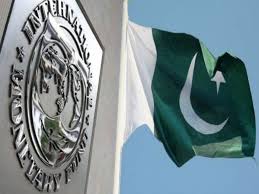IMF Suggests To Boost GDP By Covering Gender Gap
IMF Suggests To Boost GDP By Covering Gender Gap: Closing the gender gap could boost GDP in Pakistan by 30%, says a report the International Monetary Fund (IMF) released on Friday.
Pakistan’s policy of using conditional cash transfers to increase female school enrolment
The report — Pursuing Women’s Economic Empowerment — also appreciates Pakistan’s policy of using conditional cash transfers to increase female school enrolment, noting that “empirical evidence suggests educational attainment correlates positively with female labor force participation”.
Using empirical data and research statistics, the study determines that “women’s economic empowerment is a key to growth both through the direct impact of the size of the labor force on output and through the impact on productivity.
Besides Pakistan, Guatemala, Jordan, Morocco and Nigeria have also used cash transfers targeting girls’ education, to help address gender inequality and female labor force participation, the report adds.

The IMF staff study places both India and Pakistan among the countries where enhancing financial inclusion would increase female labor force participation and entrepreneurship, support small and medium size enterprises, improve competitiveness and boost potential growth.
The IMF notes that in Pakistan, Morocco and Niger inequality in inheritance rights, tax deductions or tax credits specific to men, and regulations preventing women from working at certain institutions and positions impact gender gaps in labor force participation.
The report points out that even developed countries like Canada and Japan can further boost their GDPs by 4% by empowering women.
IMF researchers have determined that “diversity and education can foster new ideas and thereby enhance productivity” while “large gender disparities in education reduce gross national product”.
In countries where the female-to-male school enrolment ratio is lower than 0.75, gross national product is approximately 25 % lower than in countries with greater gender parity in education.
The IMF argues that studies by various experts provide evidence that gender gaps in education had a negative impact on economic growth in the 1990s. Also, higher economic participation by women has implications for growth in the long run and leads to greater equality in the overall income distribution.
For More Information & Videos Subscribe To Our YouTube Channel
